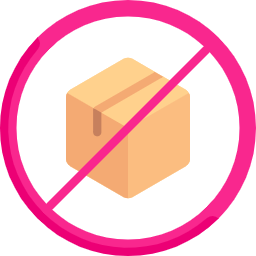Table of Contents
Introduction to Ecommerce in Australia
The ecommerce industry in Australia has seen remarkable growth, with over 80% of Australians shopping online in 2025. From small boutiques to large retailers, ecommerce has become the backbone of retail in the country. Whether you’re an entrepreneur in Sydney, Melbourne, or Perth, choosing the best ecommerce platform in Australia is key to standing out in a competitive market.
Top 10 Best Ecommerce Platform in Australia
The following list is presented in no particular order and does not represent a ranking of the brands.

1. Shopify Australia
Shopify is the leading ecommerce platform in Australia, offering everything from store design to payment integration.
Features of Shopify
- Drag-and-drop builder
- Secure payment gateways including Afterpay
- Multi-channel integration (Instagram, Facebook, eBay)
Pros & Cons
✅ Easy setup for beginners
✅ 24/7 support
❌ Monthly fees increase with scaling

2. WooCommerce
WooCommerce, a WordPress plugin, is a popular choice for Australians who want flexibility and control.
Why WooCommerce Works in Australia
- Open-source with thousands of plugins
- Strong community support
- Ideal for SMEs needing custom features
Take Note
EasyParcel offers seamless multichannel integration with platforms like Shopify, WooCommerce, EasyStore, and more—allowing you to manage all your shipments conveniently in one place. Integrate now.

3. BigCommerce
BigCommerce is an enterprise-grade ecommerce platform and one of the strongest players in Australia.
Why Australians Choose BigCommerce
- Scalable for medium to large businesses
- SEO-friendly architecture
- No transaction fees

4. Squarespace Commerce
Squarespace is well-known for its stunning design templates.
Best For: Creative entrepreneurs, artists, photographers, and service-based businesses who also want to sell products online.

5. Wix eCommerce
Wix is ideal for small businesses and startups in Australia.
Pros & Cons
✅ Intuitive interface
✅ Affordable plans
❌ Limited scalability for very large stores

6. Magento (Adobe Commerce)
Magento is a powerful and scalable solution favored by big retailers.
Best For: Large enterprises with the budget and resources for custom development.

7. Neto (Maropost Commerce Cloud)
Neto is an Australian-built ecommerce platform, making it highly relevant in 2025.
Features
- Local integrations with Australia Post, eParcel, Sendle
- Support for GST compliance and AUD payments
- Omnichannel retail features

8. Squarespace + Print-on-Demand Integrations
This option is especially popular among artists and print-on-demand sellers, who want creative freedom and dropshipping options.

9. eBay Australia
eBay remains one of the largest online marketplaces in Australia.
Advantages
- Huge customer base
- Trust and reliability
- Auction and fixed-price formats

10. Amazon Australia
Amazon is gaining momentum in Australia, offering massive reach and fulfillment services through FBA (Fulfilment by Amazon).
Pros & Cons
✅ Global exposure
✅ Reliable logistics
❌ High competition and strict policies
Tips for Choosing the Right Ecommerce Platform in Australia
For ease of use and growth, choose Shopify.
For full customization, WooCommerce is ideal.
If you’re an enterprise retailer, consider BigCommerce or Magento.
For local advantages, Neto is designed specifically for Australians.
If you want marketplace reach, sell on eBay and Amazon Australia.
What to Take Note If Shipping from Australia to Singapore
Running an ecommerce business in Australia often means serving not just local buyers but also international customers—including Singapore, one of the top cross-border shopping destinations. If you’re selling on platforms like Shopify, WooCommerce, or even marketplaces like eBay and Amazon, EasyParcel makes it simple to ship your products from Australia to Singapore.

Customs Declarations
- Every shipment must include a proper customs declaration with accurate item descriptions, values, and HS codes.
- Providing incomplete or vague details may lead to customs delays.

Restricted & Prohibited Items
- Some products such as tobacco, alcohol, controlled medicines, and certain electronics may require permits or may be restricted.
- Always check Singapore’s customs guidelines before confirming shipments.

Duties & Taxes
- Singapore imposes a GST (Goods and Services Tax) on imported goods if the shipment value exceeds SGD 400.
- Make sure to inform your buyers about potential taxes so they are not caught off guard.

Packaging & Labelling
- Since shipments travel internationally, use sturdy, export-grade packaging to prevent damage.
- Labels should be clear and easy to scan by customs and courier partners.
By preparing your shipments with these factors in mind, you can ensure a smoother delivery process and provide your Singaporean customers with a better buying experience.
Conclusion – Which Ecommerce Platform Fits Your Business Best?
The best ecommerce platform in Australia depends on your goals. Shopify leads in popularity and ease of use, WooCommerce offers unmatched flexibility, while BigCommerce and Magento serve larger enterprises. Neto stands out as a local Australian solution, while Amazon and eBay remain strong marketplaces.
In 2025, Australian businesses have more ecommerce choices than ever before. By selecting the right platform, you’ll be ready to build, scale, and thrive in the digital economy.
 Malaysia
Malaysia Thailand
Thailand Indonesia
Indonesia







